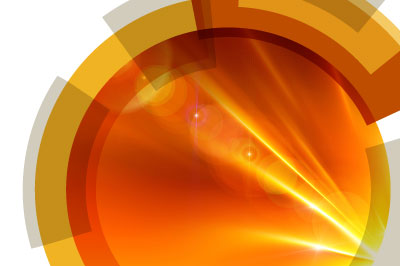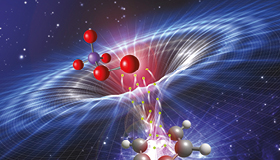Carbon dioxide utilisation processes convert CO2 into commercially viable products such as chemicals, polymers, building materials and fuels. Carbon dioxide utilisation is an emerging technology which can contribute to the reduction of greenhouse gas emissions by the use of CO2 to manufacture useful products. While generally un-reactive, CO2 can be activated, particularly through catalysis, to yield a vast array of chemical feedstocks, intermediates and value-added products. For this to be effective, a synergistic approach is needed where multiple technologies and energy sources are integrated over a complete system.
Faraday Discussions have a special format where research papers written by the speakers are distributed to all participants before the meeting, and most of the meeting is devoted to discussing the papers. Everyone contributes to the discussion - including presenting their own relevant research. The research papers and a record of the discussion are published in the journal Faraday Discussions
Novel materials that enhance the capture efficiency and selectivity of CO2 need to be developed. Molecular design through simulation and/or synthesis can be used to develop task specific materials. Furthermore, by tuning the capture chemistry, the CO2 molecule can be activated towards subsequent reaction. This session will discuss how capture agent design can be coupled to activation and the mechanisms of this interaction will be considered.
Atom Efficiency in Small Molecule & Macromolecule Synthesis
Reactions in which CO2 is added to a co-reactant preserving at least one of the C=O bonds, such as cyclo-addition reactions. Such reactions will have no or limited by-product production. Macromolecules, including polymers, will be included in these discussions.
CO2 Reduction Reactions
The production of liquid synthetic fuels will play a major role is future energy storage strategies and major sources of hydrogen must be produced and utilised in an energy efficient manner.
Biotransformations and Biomimetics
Biotransformations will provide the lead for the development of biomimetic systems that outperform nature. This will include solar fuels which can be produced with a higher efficiency than in natural photosynthetic processes.
Carbon dioxide utilisation is presented as a complementary rather than competitive approach to carbon capture and storage, where the product produces a viable profit that can be used to off-set the carbon capture technologies required to mitigate against climate change.
Poster Prize Winner
Georgina Gregory, University of Bath, UK
Format
The Faraday Division have been organising high impact Faraday Discussions in rapidly developing areas of physical chemistry and its interfaces with other scientific disciplines for over 100 years.Faraday Discussions have a special format where research papers written by the speakers are distributed to all participants before the meeting, and most of the meeting is devoted to discussing the papers. Everyone contributes to the discussion - including presenting their own relevant research. The research papers and a record of the discussion are published in the journal Faraday Discussions
Themes
Capture Agents & Conversion MechanismsNovel materials that enhance the capture efficiency and selectivity of CO2 need to be developed. Molecular design through simulation and/or synthesis can be used to develop task specific materials. Furthermore, by tuning the capture chemistry, the CO2 molecule can be activated towards subsequent reaction. This session will discuss how capture agent design can be coupled to activation and the mechanisms of this interaction will be considered.
Atom Efficiency in Small Molecule & Macromolecule Synthesis
Reactions in which CO2 is added to a co-reactant preserving at least one of the C=O bonds, such as cyclo-addition reactions. Such reactions will have no or limited by-product production. Macromolecules, including polymers, will be included in these discussions.
CO2 Reduction Reactions
The production of liquid synthetic fuels will play a major role is future energy storage strategies and major sources of hydrogen must be produced and utilised in an energy efficient manner.
Biotransformations and Biomimetics
Biotransformations will provide the lead for the development of biomimetic systems that outperform nature. This will include solar fuels which can be produced with a higher efficiency than in natural photosynthetic processes.
Aims
This discussion aims in part to look at a holistic approach, identifying where efficiencies can enhance the whole process economics and predicting where there may be bottlenecks in the supply chain.Carbon dioxide utilisation is presented as a complementary rather than competitive approach to carbon capture and storage, where the product produces a viable profit that can be used to off-set the carbon capture technologies required to mitigate against climate change.
Poster Prize Winner
Georgina Gregory, University of Bath, UK











